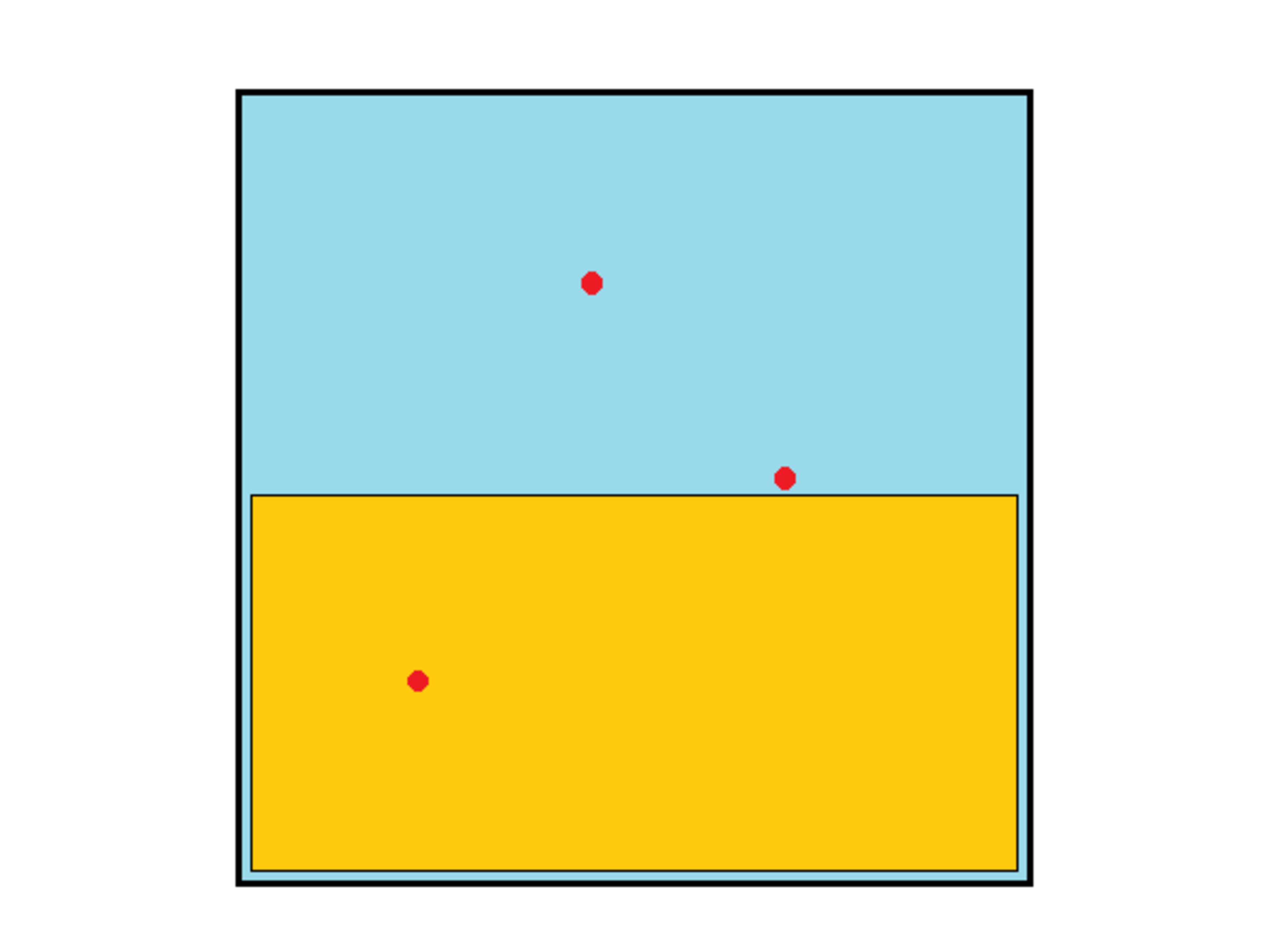3 points in a unit square

You and a friend decide to play the following game...
You draw three distinct dots inside a unit square.
Then your friend draws the biggest rectangle (with edges parallel to those of the square) she can which contains exactly one of the three dots.
With the initial three dots, you try to minimize the size of the rectangle she is able to draw.
If you play optimally, what is the area of the largest rectangle she will be able to draw containing exactly one of the three dots?
Give your answer to 3 decimal places.
Assumption: The dots are allowed to share the same or coordinate, but not both.
Bonus question: What about if you start with five dots?
Inspired by this problem by Sharky Kesa ! :0)
The answer is 0.382.
This section requires Javascript.
You are seeing this because something didn't load right. We suggest you, (a) try
refreshing the page, (b) enabling javascript if it is disabled on your browser and,
finally, (c)
loading the
non-javascript version of this page
. We're sorry about the hassle.
The solution involves clumping the dots together in such a way that they create an "L" shape, but they are arbitrarily close together.
That is, the points are of the form:
Where δ → 0
Consider this picture:
The three points you choose are shown in red (size and distance between them exaggerated for clarity).The maximum sized rectangles your friend can then draw are depicted in this figure, in blue, green, and orange, one for each point. The brown region is where the orange and blue rectangles overlap.
Note: The optimal solution requires minimizing the area of this overlap and distributing the area equally between the three rectangles.
Here is my stab at a "proof"...
Finding the optimal solution consists of three steps:
So, for (1) WLOG, lets assume that none of the three share the same x coordinate. Then one could draw a line segment at x = 2 1 . If one point happens to lie on the line segment, then choose a location just to the left or right of that point. Now, if you have three dots on one side, extend the line toward the dots until it contains one point. If you have two dots on one side and one dot on the other side, then draw the rectangle around the one dot. Either way, you have a rectangle of at least 2 1 which we will show later is greater than our final answer. Therefore, we can assume (1) to be correct (as soon as we show that a lower bound can be achieved).
For (2), lets assume that the points aren't "clustered arbitrarily close together", then the distance between the two that aren't "close together" will only give the second player a degree of freedom that is removed if the two dots are moved arbitrarily close to the single dot (or vice versa)
So, if we assume (1) and (2) to be true, then we are left with a cluster of three dots in an "L" shape and need only to determine x and y in the above equations. Lets assume δ → 0 but remains positive in the above equations. Then, your friend has three choices of rectangles:
Now the optimal solution is obtained when the three above three areas are equal, since a purturbation from that position would allow your friend to choose a dot which increases the area of the final rectangle.
So,
y = x = ( 1 − x ) 2
Solving:
( 1 − x ) 2 = x
x 2 − 2 x + 1 = x
x 2 − 3 x + 1 = 0
x = 2 3 ± ( 9 − 4 )
x = 2 3 − 5 (since x < 1 )
So, Area = x = 0 . 3 8 2